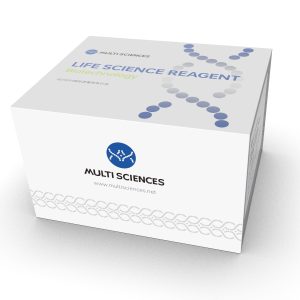HGNC ID: 349
Target Abstract:
Alpha-2-HS glycoprotein (AHSG), also known as fetuin-A, is a protein produced by the liver and secreted into the bloodstream. It belongs to the group of binding proteins that mediate the transport and utilization of various substances in the blood. Knockout mouse experiments have shown that fetuin-A is a potential systemic inhibitor of calcification. It plays an important role in countering insulin resistance induced by free fatty acids in the liver. In prediabetes, fetuin-A can predict adverse blood sugar outcomes. It is also associated with increased risk of non-alcoholic fatty liver disease and cardiovascular diseases. During sepsis and endotoxemia, fetuin-A acts as a negative acute-phase reactant, promoting wound healing and exerting neuroprotective effects in Alzheimer’s disease. Decreased levels of fetuin-A are associated with increased risk of exacerbation in obstructive lung diseases, Crohn’s disease, and ulcerative colitis.
AHSG Target Infomation Overview
- Target Symbol: AHSG, alpha 2-HS glycoprotein
- Gene Groups: Cystatins, type 4
- Alias: FETUA; A2HS; HSGA
- Alias Names: fetuin A
AHSG, alpha 2-HS glycoprotein Target Infomation by Species
- Human
- Mouse
- Rat
Human AHSG Target Information
- Target Symbol: AHSG, alpha 2-HS glycoprotein
- Alias:
- A2HS
- AHS
- alpha-2-HS-glycoprotein
- alpha-2-Z-globulin
- APMR1
- ba-alpha-2-glycoprotein
- FETUA
- fetuin A
- fetuin-A
- HSGA
- NCBI_Gene: 197
- UniProtKB: P02765
Human AHSG Predicted Functions
Predicted to enable endopeptidase inhibitor activity. Involved in acute-phase response; positive regulation of phagocytosis; and regulation of inflammatory response. Located in Golgi apparatus. Implicated in alopecia-mental retardation syndrome 1; coronary artery disease; and type 2 diabetes mellitus. Biomarker of gestational diabetes; myocardial infarction; obesity; and type 2 diabetes mellitus.
Mouse Ahsg Target Information
- Target Symbol: Ahsg, alpha-2-HS-glycoprotein
- Alias:
- fetuin-A
- NCBI_Gene: 11625
Mouse Ahsg Predicted Functions
Predicted to enable endopeptidase inhibitor activity and receptor signaling protein tyrosine kinase inhibitor activity. Involved in negative regulation of bone mineralization. Acts upstream of or within ossification. Predicted to be located in Golgi apparatus; collagen-containing extracellular matrix; and extracellular space. Predicted to be part of protein-containing complex. Predicted to be active in extracellular matrix and extracellular region. Is expressed in several structures, including gut; heart; limb segment; reproductive system; and skeletal musculature. Human ortholog(s) of this gene implicated in alopecia-mental retardation syndrome 1; coronary artery disease; and type 2 diabetes mellitus. Orthologous to human AHSG (alpha 2-HS glycoprotein).
Rat Ahsg Target Information
- Target Symbol: Ahsg, alpha-2-HS-glycoprotein
- Alias:
- 59 kDa bone sialic acid-containing protein
- Aa2-066
- alpha 2 HS-glycoprotein alpha 2 (fetuin)
- BSP
- fetuin-A
- glycoprotein PP63
- phosphorylated N-glycoprotein pp63
- phosphorylated N-glycoprotein, pp63
- pp63
- NCBI_Gene: 25373
- UniProtKB: P24090
Rat Ahsg Predicted Functions
Enables receptor signaling protein tyrosine kinase inhibitor activity. Involved in several processes, including animal organ development; negative regulation of bone mineralization; and positive regulation of bone resorption. Located in collagen-containing extracellular matrix and extracellular space. Part of protein-containing complex. Human ortholog(s) of this gene implicated in alopecia-mental retardation syndrome 1; coronary artery disease; and type 2 diabetes mellitus. Orthologous to human AHSG (alpha 2-HS glycoprotein).

